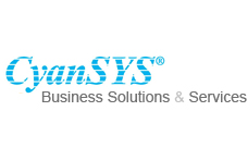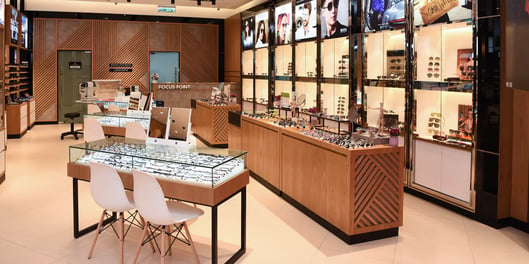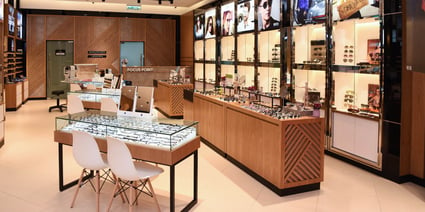
Focus Point - Malaysia
With over 180 retail stores, eye-care specialist Focus Point wanted to accelerate month-end reporting, streamline merchandising and improve sales analysis. From 2011, Focus Point created an end-to-end business management system using the Microsoft Dynamics-based system, LS Retail. This connects all store points of sale with central warehousing, merchandising and the finance system. Now, finance reports are quickly and accurately compiled, and require 60 percent less effort. Faster decision-making has boosted margins, increased cash flow and increased competitiveness.
Business case
Since 1989, Focus Point has expanded rapidly to become Malaysia’s leading professional eyewear retailer. Today, the company has over 81 wholly owned outlets in Malaysia, and more than 86 franchise stores across Malaysia and Brunei. Executives wanted to continue expanding across Asia, but with business data stored in different silos, they realized their existing systems were holding the company back. “Our head office used UBS Accounting software for all back-end finance systems, while all our stores used a Malaysian DOS-based POS product called Vista for sales and stock-management,” says Jacky Chin Wui Min, Senior Application Manager, Focus Point. “These two systems could not exchange data easily. “As we grew, the difficulties of getting accurate business data quickly impacted productivity, management and the stores’ overview.” To collect sales data from stores and compile monthly reports, Focus Point needed to employ two to three full-time management information staff. Even so, month-end reports took one week to collate, and the stores’ data was sometimes difficult to reconcile with head office data. This increased the risk of accounting errors and late month-end reporting. “Sales reports were always at least one week old, but executives wanted precise, detailed and up-to-date sales information,” says Jacky. “They wanted to create product or outlet action plans as soon as sales started to underperform.” “Ultimately, we wanted information to flow naturally right across our supply chain,” he adds. “We wanted store ordering data to flow directly to our warehousing operations, and franchisee pricing to flow from head office to outlets. We also wanted customers’ eye-care history to be instantly accessible to all stores from a single repository, so as to provide better customer service.”
Solution
In early 2011, Focus Point contacted the Microsoft Gold Certified ERP Partner, CyanSYS. CyanSYS recommended an end-to-end, business-management platform called LS Retail, which is built on top of Microsoft Dynamics. “We chose LS Retail, because it is robust and user-friendly,” says Jacky. “It contained multiple options and features that we could choose from to suit our business. Because it was based on Microsoft Dynamics, we knew there was a steady technology roadmap in place. As a result, we could be confident that if we deployed LS Retail, it would grow and develop with our business.” Between 2011 and 2013, Focus Point created a single end-to-end retail, merchandising, warehousing and finance system. In phase one, Focus Point used the Microsoft SQL Server component to create a single, centralized database for all finance, product and customer information. This enables executives to create standardized sales, product and accounting reports. Next, Focus Point deployed the LS Retail merchandising and warehousing features. This enables head office staff to track inventory data in real-time. Once the stores were connected, these features would also purchasing and warehousing business units to automatically process purchase orders placed by each store. In phase three, Focus point deployed LS Retail POS software in each store, so sales and ordering data is automatically uploaded into the central database. This means head office staff can track each store’s stock and sales data, and store staff can track the progress of purchase orders in Focus Point warehouses. It also enables store managers to access customers’ historical data—including prescription lens and contact lens details—in every outlet.
Benefits
With a single, end-to-end business management system built on Dynamics, Focus Point has streamlined business processes, increased sales transparency and improved the accuracy of all reporting. With faster decision-making, Focus Point stores are more competitive, and business cash flow and margins have both improved.
Faster and more reliable reporting
Now, month-end reports are highly reliable and always ready on time. In addition, Focus Point now only needs four employees to compile all staff and finance reports, instead of ten. “The work-hours required to compile critical reports has dropped by 60%,” says Jacky. “What’s more, our sales reports are absolutely up-to-date, which means executives can create action plans in response to real-time trends.”
Better inventory management
With integrated sales and inventory data, executives ensure they avoid purchasing excessive stock. “Now, we can respond to customer demand very quickly by clearing obsolete fashion items and investing in high-selling products,” says Jacky.
More controlled corporate expansion
Focus Point can also open new stores more easily. “It only takes a day for us to roll out our core technology in new stores,“ says Jacky. “This makes it easier for us to expand, and makes our franchise business more attractive. “As we get bigger, we are also adapting the Dynamics platform. Using the reporting features in Microsoft SQL Server Reporting Services we will shortly be able to analyze sales by product ranges in specific geographical areas.”
Smarter decision-making
The company president believes the end-to-end platform has empowered executives. “Dynamics helps us make smart decisions that have a direct impact on our bottom line,” says Dato’ CL Liaw’s, President and CEO of Focus Point Holdings Berhad. “As a result we have increased profit margins and improved cash flow. This technology is delivering real business value.”
The LS Retail software solution helps us make smart decisions that have a direct impact on our bottom line. We can quickly respond to customer demand … [and] … as a result, we have increased profit margins and improved cash flow.
LS Retail implementation partner


